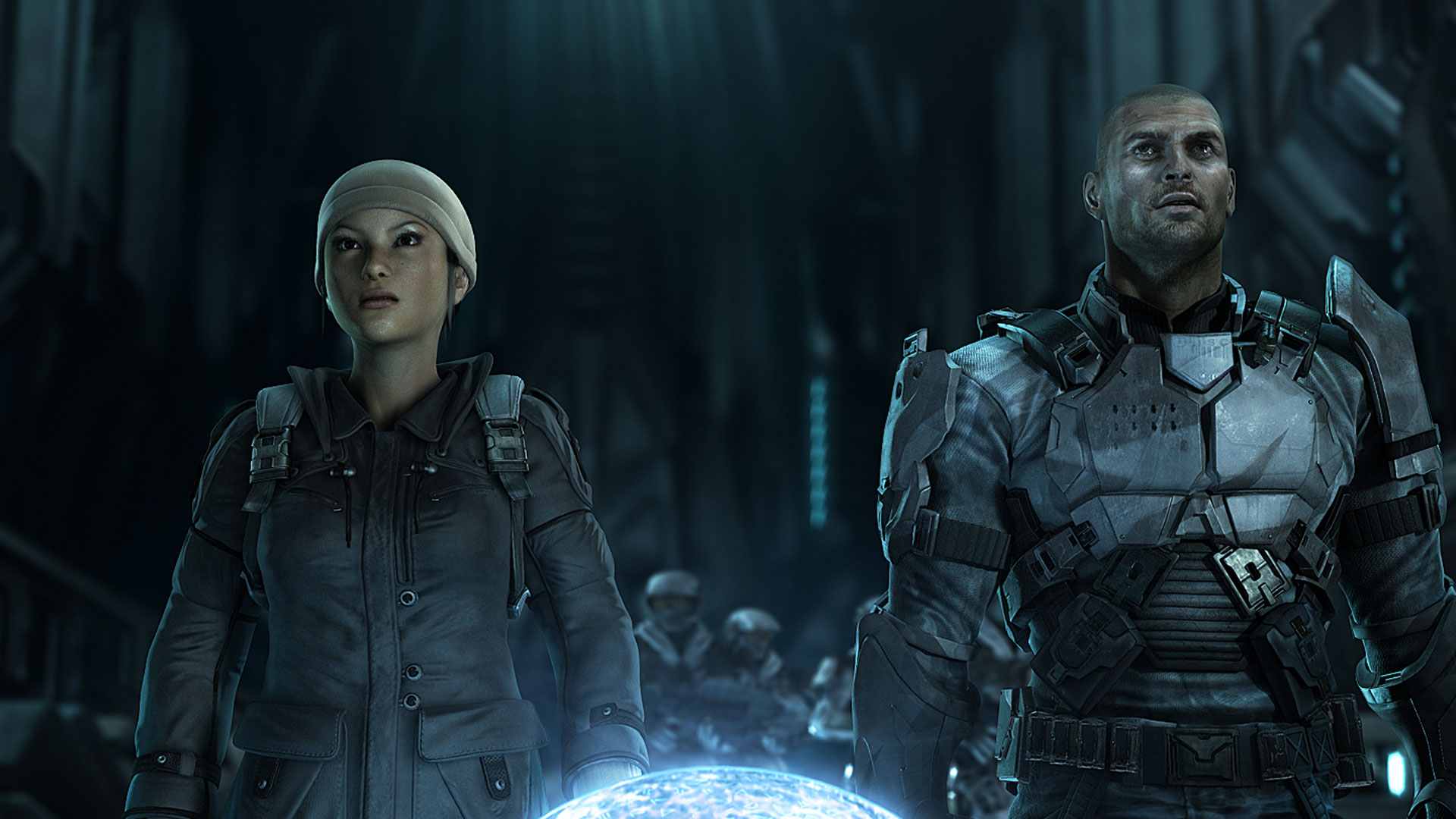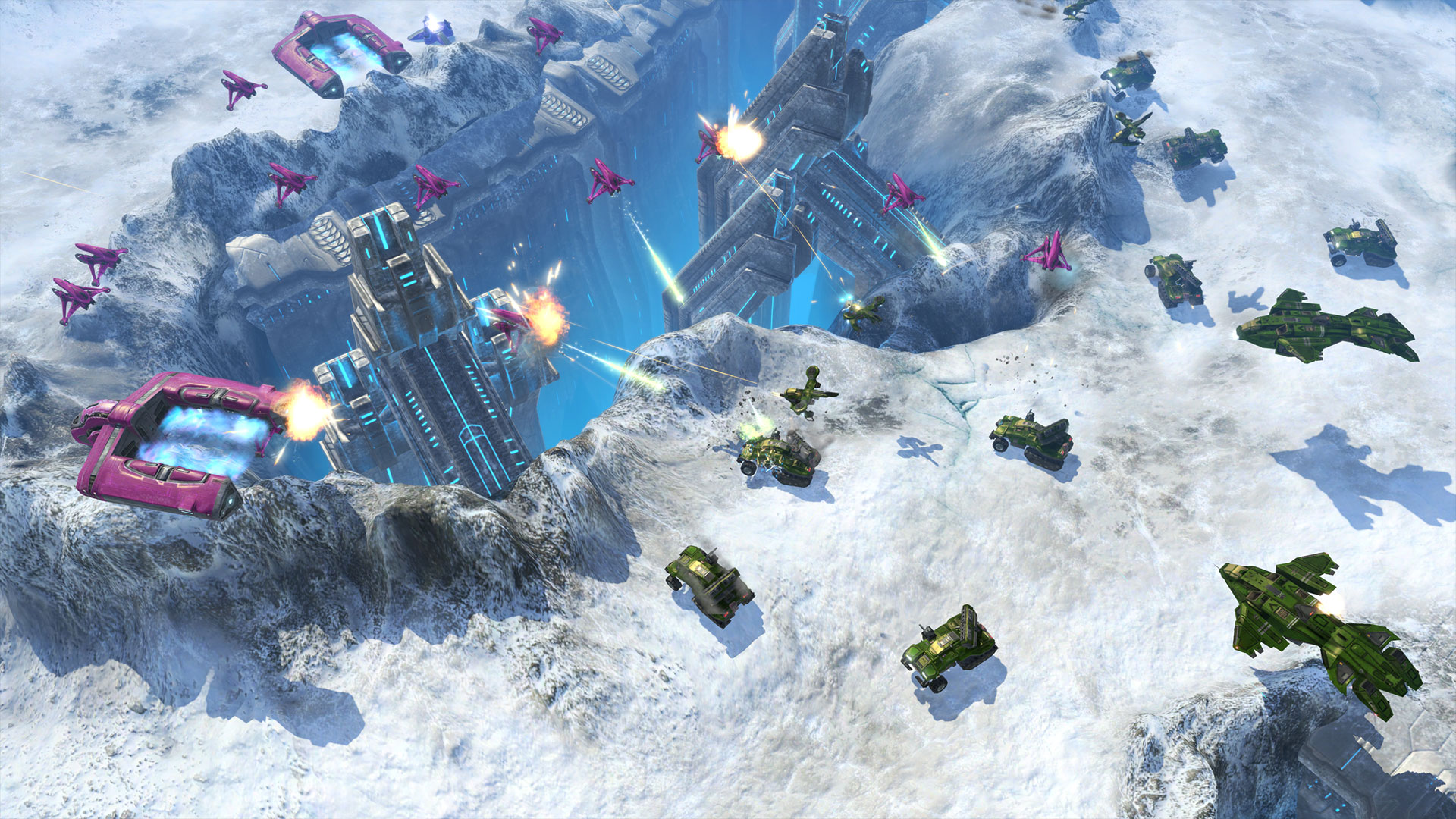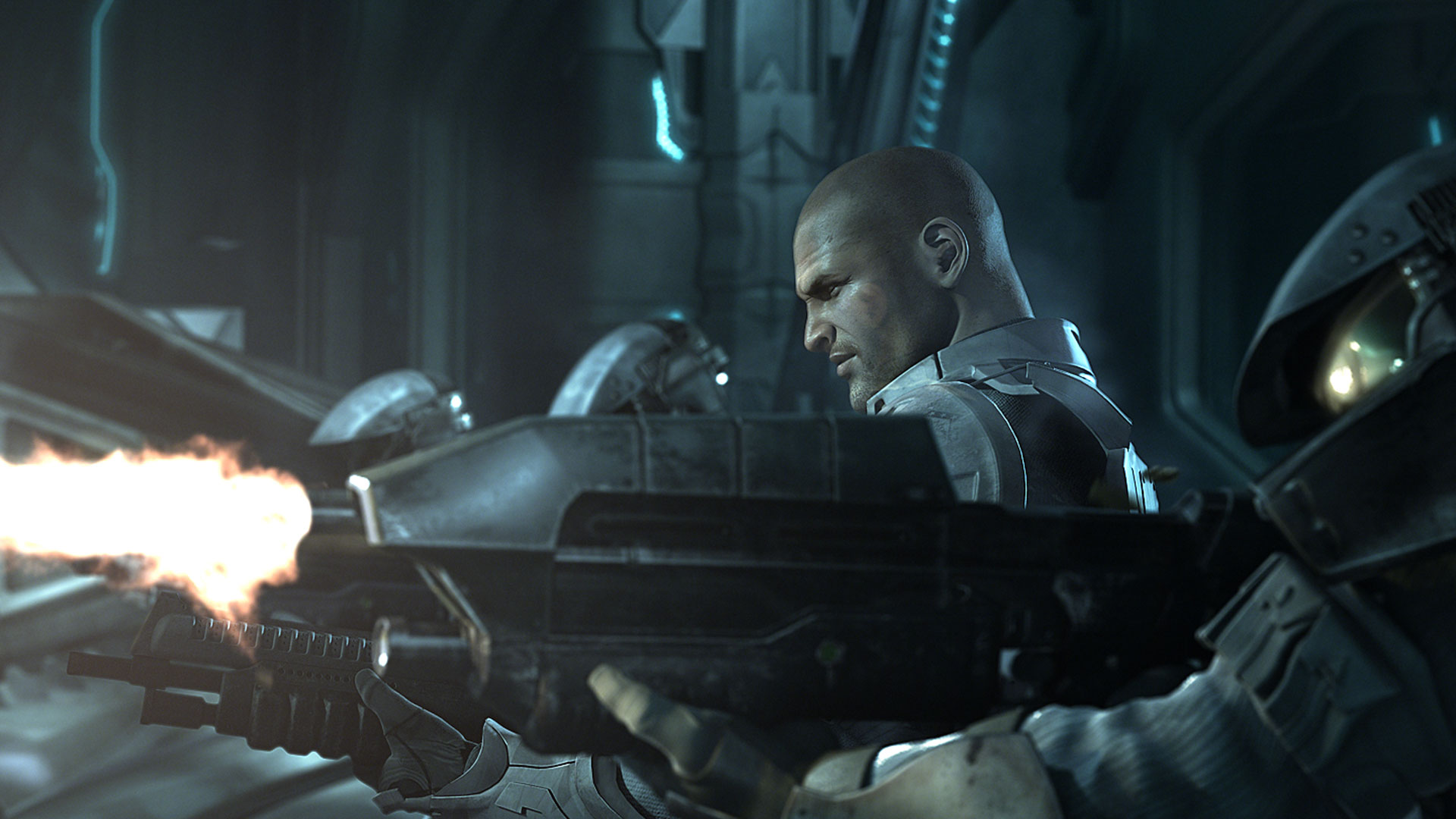As Halo Wars turns 15, we look back on this bold genre-breaking experiment
Little wars, big consequences

15 years ago, the Halo franchise took a bold leap into the real-time strategy (RTS) genre, giving audiences a whole new perspective on a beloved franchise. Halo Wars represented a brave attempt by Microsoft Game Studios to place its world-famous setting in a brand new context: the RTS game.
Until 2009, the sweeping sci-fi space opera of the Halo series had been confined purely to the first-person shooter (FPS) formula. Generally, these games offered a bleak future, where humanity was stuck in an asymmetrical war with a superior alien enemy referred to as the Covenant; a society of religious zealots and fanatics. However, until the release of Halo Wars, this conflict and the rich setting that underpinned it had only been explored from behind the iconic green helmet of Master Chief - the last Spartan supersoldier.
Halo Wars would be the first Halo title to follow from the trilogy, and the time was right for a fresh direction. Developed by Ensemble Studios, the folks behind the seminal Age of Empires RTS games, Halo Wars would offer a top-down look at the series. Taking place 21 years before the events of Halo: Combat Evolved, Halo Wars offered a broader look at the setting, focusing on one of humanity’s earlier battles with the Covenant.

However, in typical RTS fashion, players commanded an entire army, offering a far broader perspective and allowing for storytelling on a bigger scale. Instead of controlling one man, you now controlled an entire army with a singular mission. Halo Wars demanded that you take a wider form of responsibility and, in doing so, allowed us to reckon with the breadth of humanity’s war with the Covenant.
Humanity isn’t quite as battered in Halo Wars as it is in the Halo trilogy. The United Nations Space Command (UNSC) has supersoldiers to spare. Seeing a group of Spartans battle hordes of aliens in a gorgeous cutscene blew my mind back in 2009 - the way they towered over their non-augmented counterparts and methodically dispatched their enemies was breathtaking. The notion of commanding multiple Spartans in battle was as novel as it was empowering.
The view from above

Though Master Chief was always the focal point of the Halo series, the overarching plot of the original trilogy was always about humanity’s fight for survival. However, until Halo Wars arrived, we’d only seen this conflict from a very specific perspective.
Fortunately, Halo Wars changed this by giving you access to an entire army and through its compelling storytelling, which focused on more vulnerable, non-augmented characters. Instead of following the story of Master Chief, the main campaign centered around Captain Cutter, a grizzled naval officer, young buck Sergeant Forge, and the pragmatic Professor Anders. These characters offered a refreshing change of pace from Halo's past.
Sign up for breaking news, reviews, opinion, top tech deals, and more.
By taking a broader look at the scale and human cost of conflict, Halo Wars helped pave the way for Halo 3: ODST
It’s a recurring theme in the Halo universe that the humans are the underdogs. This was sometimes a hard sell in the original Halo trilogy due to Master Chief’s superhuman killing abilities. As a Spartan, you were a powerhouse, shooting your way through scores of aliens in a manner reminiscent of Doom. This made for a thrilling game experience, but this sometimes made the idea of our hero being the underdog seem a little farfetched.
This is something that Halo Wars addresses in a big way. Soldiers die in battle, and even the named characters are far from invulnerable. By taking a broader look at the scale and human cost of conflict, Halo Wars helped pave the way for Halo 3: ODST, a stand-alone FPS campaign that would follow a squad of drop-troopers stranded in the city of New Mombasa. Contrary to Master Chief, these soldiers lacked shields and couldn’t trivially dual-wield weapons, meaning that cover and planning were vital for survival. Much like Halo Wars, it was a bold departure from what players had known before and became all the stronger for it.
Leap of faith

The move from FPS to RTS helped highlight how new genres can help shine fresh perspectives on existing settings and franchises, even for something as iconic as Halo. While far from perfect, Halo Wars’ slick and intuitive system for mass battles helped illustrate that new contexts can enrich established game worlds. Halo Wars’ success in this regard doubtless helped get Halo Wars 2 greenlit - a sequel that was released back in 2016.
We’ve seen other developers run with this idea, too. ATLUS, the studio behind the popular Persona series of role-playing games (RPGs), has released plenty of spin-offs for the series, which explore new genres, following in the footsteps of Halo Wars in their own way. Speaking for Persona 5, the most recent mainline title, we’ve seen a dancing game, an action RPG, and even a strategy spin-off, all of which go to show how different genres can bring variety to existing settings.

Avowed, an upcoming game from role-playing game (RPG) veterans Obsidian Entertainment, will be following in Halo Wars’ footsteps, too, albeit in the opposite direction. The anticipated RPG is set to be a first-person adaptation of the fantasy setting used for the studio’s Pillars of Eternity series of isometric RPGs. Like Halo Wars, Avowed will give us a different sort of look at the fantasy world of Eora.
Halo Wars was a brave experiment at the time it was released, and while it’s unlikely to have directly inspired the likes of Avowed or Persona 5 Tactica, it’s a living, breathing example of how success is possible for those seeking to offer a new spin on a beloved series. It goes to show that that this kind of leap of faith can pay off; clearly showing developers and audiences everywhere that acts of lateral reinvention can deliver in big ways.
Want more iconic titles? Check out our lists of the best Xbox Series X games and the best PS5 exclusives.

An editor and freelance journalist, Cat Bussell has been writing about video games for more than four years and, frankly, she’s developed a taste for it. As seen on TechRadar, Technopedia, The Gamer, Wargamer, and SUPERJUMP, Cat’s reviews, features, and guides are lovingly curated for your reading pleasure.
A Cambridge graduate, recovering bartender, and Cloud Strife enjoyer, Cat’s foremost mission is to bring you the best coverage she can, whether that’s through helpful guides, even-handed reviews, or thought-provoking features. She’s interviewed indie darlings, triple-A greats, and legendary voice actors, all to help you get closer to the action. When she’s not writing, Cat can be found sticking her neck into a fresh RPG or running yet another Dungeons & Dragons game.